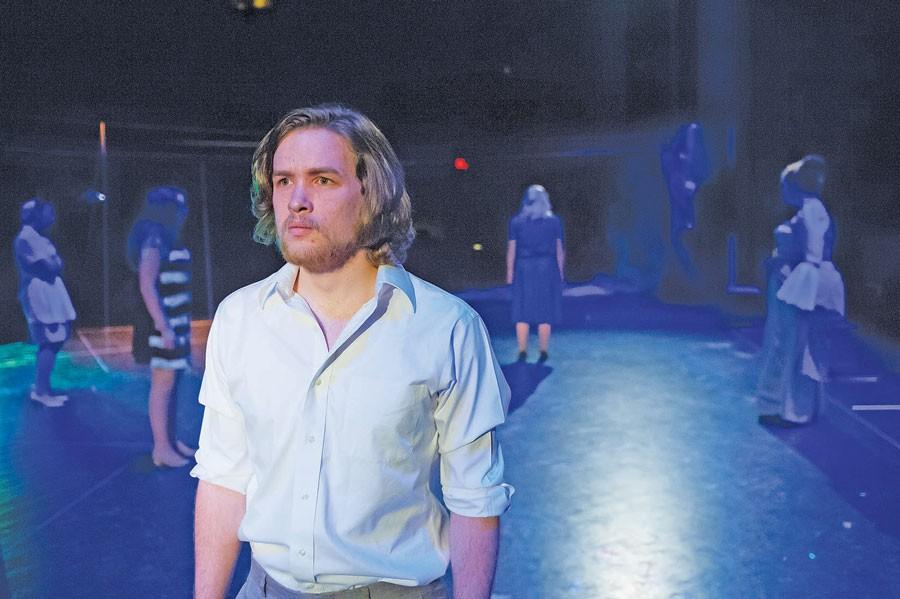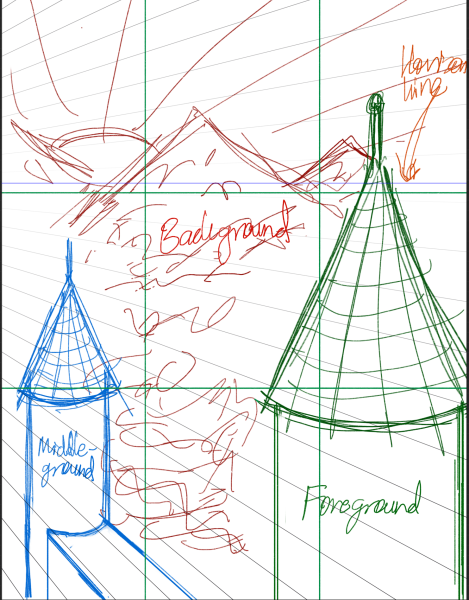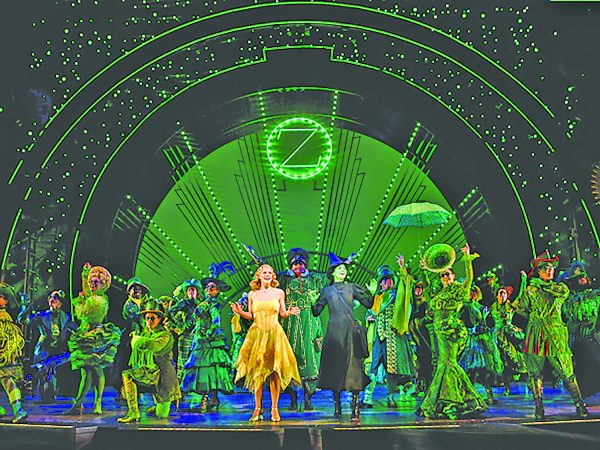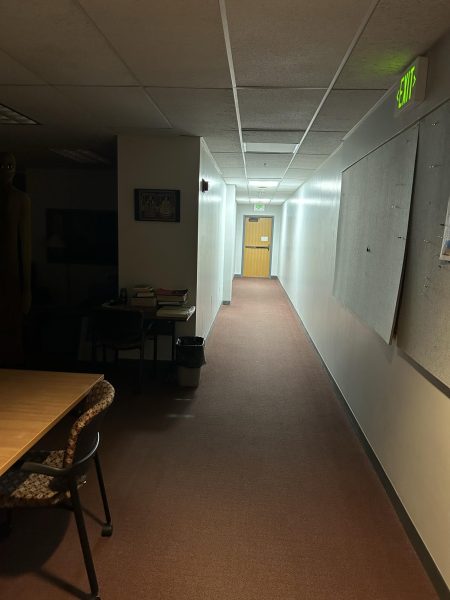“Eurydice” re-imagines Greek tragedy
Thomas Gunn as Orpheus
Sitting in a place normally off limits to the audience, we wait for the show to begin. The lights cast the stage in blue and yellow hues, and the sounds of nature and flowing water fill the air around us. As showtime approaches, the sounds fade and a hush falls over the audience. The suspense is broken only by the restless chuckles of a few audience members. Then, after long moments of waiting, darkness falls and the show begins.
A poignant, tragic, and humorous tale, “Eurydice” reworks the Greek myth of Orpheus and Eurydice. Rather than following Orpheus as he attempts to rescue his lost love from the Underworld, the play centers upon Eurydice as she attempts to navigate the confusion and despair of being dead. Written by Sarah Ruhl in 2003, this enchanting story was brought to Johnson by performing arts professor and show director Isaac Eddy.
The most immediately obvious and unusual aspect of “Eurydice” was the seating. Rather than allowing show-goers to seat themselves at will in the house, cast members in costume led the audience to seats that were arranged, bleacher style, on the stage itself. This resulted in a uniquely immersive experience of being so close to the actors that I worried any abrupt movements might disturb them.
Although problematic in that bathroom breaks would have been incredibly awkward to the point of being avoided entirely, it drew a focus from the audience members that solidified the atmospheric nature of the show.
Unfortunately, this fascinating seating arrangement only worked for approximately 80 percent of the audience. Any scene that took place at the front of the stage, which many key scenes did, was unviewable by the audience members seated toward the back of the stage’s left side.
However, this troublesome oversight was the only severely negative aspect of the show. The small cast contained no weak performances, carrying a feeling of thorough rehearsal and confidence throughout.
Mackenzie Brown’s portrayal of Eurydice was poignant and compelling, capturing the titular character’s strength, which persisted despite the confusion and uncertainty of her death and subsequent arrival in the Underworld. Her enchantingly innocent demeanor was a pleasure to watch, and a way for the audience to empathize when they might be a little bit lost themselves.
Orpheus (Thomas Gunn) was equally compelling. Although the character was ridiculously poetic and fanciful at times, Gunn’s performance ranged from enthusiastic to tragic and carried deep, heartfelt emotion. His devotion to Eurydice was profound and beautiful, although occasionally also irrational to the point of amusement.
Eurydice’s father (Sam Lewis) was a fascinating character, somehow remaining good-humored after many years in the Underworld. His love for his daughter was evident, from his patience with her memory loss after crossing the river Lethe to his disheartenment when he lost her all over again.
Enforcing the rules and ambience of the Underworld, the three Stones (Chelsey Staples, Molly Burnett, Samantha Gunn) brought a powerfully assertive force to the stage with their often-synchronized lines and commanding delivery.
Finally, Shawn Weibel brought to life a peculiarly inconsistent Lord of the Underworld. Beginning the show as an interesting man in a long black coat and then spending much of the later performance as an ill-tempered child, he added a different style of comedy to the story’s generally subtle humor.
The set (designed by Sara Nelson) was minimalistic, which was necessary since the seating took up most of the stage but also worked very well with the artistic creativity of the show. Apart from a scaffolding structure against the back wall of the stage and two “gates to the Underworld,” the set was made largely from string that had been hung up across the stage and auditorium. Not only for decoration, the string was an intrinsic part of the performance.
Since there was no way to change the set on stage, scenes set in different locations needed a creative solution. While Eurydice and her father had their scenes in the Underworld, Orpheus was given the balcony, allowing the scenes to trade back and forth without having to stop in between. Although slightly difficult to follow, depending on your place in the audience, it was a very interesting and effective use of the space.
In addition to the unorthodox set, the show utilized technology in an unusually creative manner. During key scenes, close-ups of the actors were projected onto the back wall of the stage, giving them a larger-than-life presence, yet also allowing for a more personal experience for the members of the audience who might not have a clear view of the goings-on. These projections were also a form of creative expression for the play. Some scenes were projected from a top-down view, allowing for an angle that would have been impossible otherwise and added quite a lot to the emotion of the scenes.
When not being used as a second point of view, the projector cast abstract graphics onto various areas: the back wall, the entrance to the Underworld, the ceiling, and even the actors themselves. This, along with brilliantly effective use of sound effects (sound design by Will Davis, director of Dibden), set the scene and tone in which the story took place.
Trying to pin the story in any one time period was nearly impossible, which made the costume design that much more interesting. Orpheus and Eurydice were both clothed in fairly era-neutral outfits, although I might guess at the 50s or 60s, but the three Stones were each wearing something from a different era: one rather Victorian, one a flapper from the 1920s, and one a nurse circa World War II. Although initially this seemed rather random — especially since the Stones were the ones leading people to their seats before the show — it became clear that this represented the timelessness of the Underworld, and served an important unspoken role in the story.
To top off the beauty of the show, the score was perfectly atmospheric, following the ups and downs of the mood with astonishing accuracy and deepening the emotional connection to the characters’ journeys.
It’s always nice to know that the minds behind a production are impassioned about the project. In a Q and A after Thursday’s show, Eddy said, “[The show] felt amazing. I told the cast that this has been the most artistically gratifying experience of my life.” Coming from a man who was part of the Blue Man Group for 12 years, this seems like particularly high praise.
Overall, despite its few shortcomings, “Eurydice” was a Dibden experience unlike any other. The cast was amazing, the story was fascinating, and the stage design was clearly a culmination of many creative minds working together. I don’t expect that we will see anything similar for a very long time to come, if we ever do.






